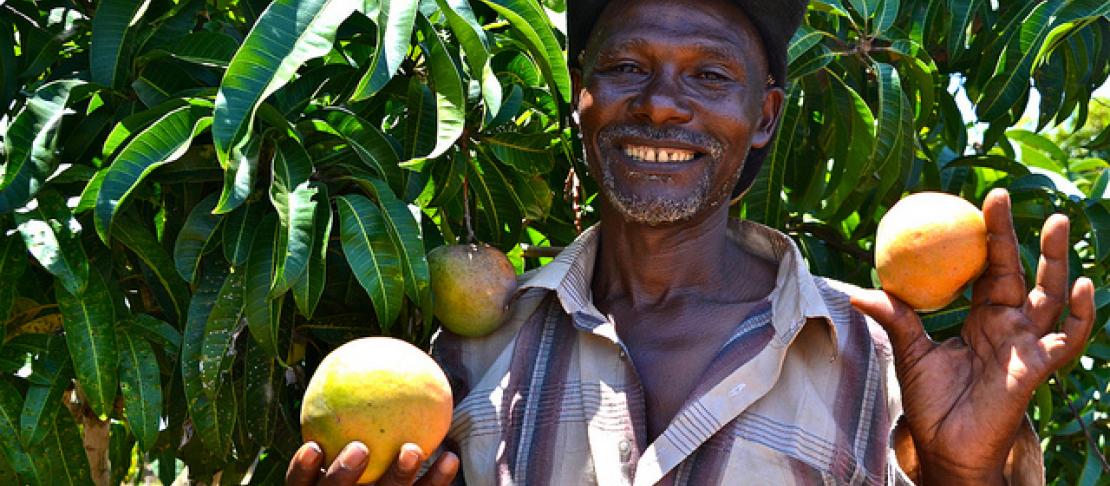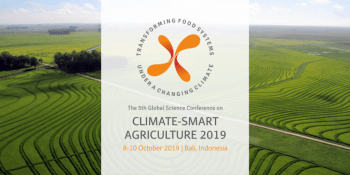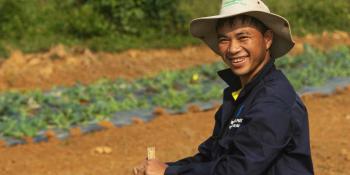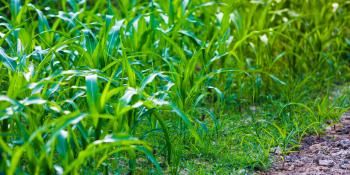Diversification key to ensuring food security and stabilizing food production in Africa

A new paper explores the relationship between farming diversity and food security in Africa.
Agricultural systems in East Africa are highly vulnerable to climate change and variability. The frequency and severity of climate shocks such as drought, floods, heat and cold stress have increased, with negative impacts on agriculture and food security.
Farmers in Africa have long adapted to climate change by diversifying their farming activities. This means, for example, spreading the risk amongst different crop and livestock types or increasing the range of agricultural products for markets.
A new paper explores the relationship between diversity and food availability for Africa both at household and continental levels, and identifies the diversification potential of African agriculture and its limits.
The paper’s authors come from the Commonwealth Scientific and Industrial Research Organisation (CSIRO), the International Livestock Research Institute (ILRI), the International Institute for Applied Systems Analysis (IIASA), the CGIAR Research Program on Climate Change, Agriculture and Food Security (CCAFS), and Wageningen University & Research (WUR).
The study was based on over 28,000 agricultural household surveys from 18 African countries and spatially explicit data on crop and livestock production. It used data on rainfall, rainfall variability, and farming diversity to determine the available diversification options on the continental scale.
Are more diverse farming systems more secure?
The authors found that households with higher farming diversity tend to be more successful in meeting their consumption needs than households with lower diversity, irrespective of land size, livestock ownership, and off-farm income. However, food availability on the household scale increases only up to a certain level of diversity.
Thus, more diverse farming systems can contribute to household food security. However, the relationship is influenced by other factors, for example, the market-orientation of a household, livestock ownership, non-agricultural employment opportunities, and available land resources.
Diversification potential on the continental scale
The study found that the greatest opportunities for diversification of food crops, cash crops and livestock are located in areas with 500–1000mm annual rainfall and 17–22% rainfall variability.
Unfortunately, 43% of the African cropland currently lacks these opportunities, which may hamper the ability of agricultural systems to respond to climate change.

Figure: Graphical abstract of the methodology used by Waha et al. 2018. Source: CSIRO blog
Also, while rainfall is a strong driver and rainfall variability is a good measure for identifying areas with high diversification potential, it is not the only factor determining farmers’ choices of crop and livestock. Households might still be limited in their ability to diversify because of unfavorable soils, or labor, input and land constraints, or because of their remote location without access to extension services that provide support for new crops or crop management techniques.
The study demonstrates that diversification will have an essential role to play in ensuring food security and stabilizing food production in Africa where possible, and it suggests that a shift in the research and policy paradigm towards agricultural diversification options may be necessary.
Download the article: Waha K, van Wijk MT, Fritz S, See L, Thornton PK, Wichern J, Herrero M. 2018. Agricultural diversification as an important strategy for achieving food security in Africa. Global Change Biology.
Interested in policies and priorities for climate-smart food systems? Subscribe to our newsletter to receive quarterly updates on our CCAFS work and occasional announcements.
Read more:
- CSIRO blog: Diversification important for food security
Katharina Waha and Mario Herrero acknowledge support from a CSIRO Office of the Chief Executive Science Leaders grant and the Belmont Forum/FACCE-JPI-funded DEVIL project NE/M021327/1 (Delivering Food Security on Limited Land).
Additional support from the LiveGAPS project funded by the Bill and Melinda Gates Foundation is also acknowledged (Project OPP1134229, Understanding livestock yield gaps for food security poverty alleviation and the environment).
Philip Thornton acknowledges support from a CSIRO McMaster Fellowship and the CGIAR Fund Council, Australia (ACIAR), European Union, International Fund for Agricultural Development (IFAD), New Zealand, Netherlands, Switzerland, UK and Thailand for funding to the CGIAR Research Program on Climate Change, Agriculture and Food Security (CCAFS).
Lili Szilagyi is the Communications Consultant for the CCAFS Flagship on Priorities and Policies for CSA.



